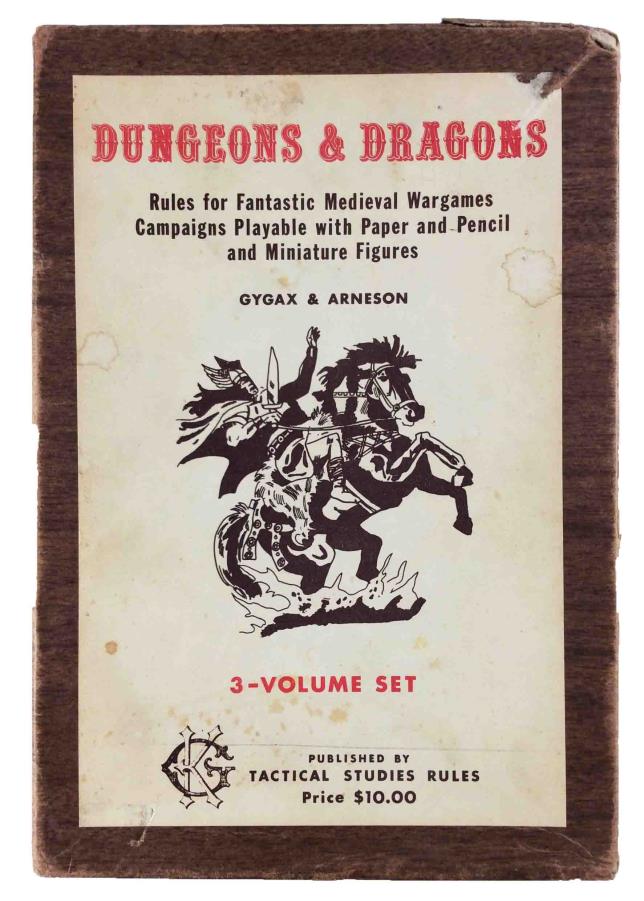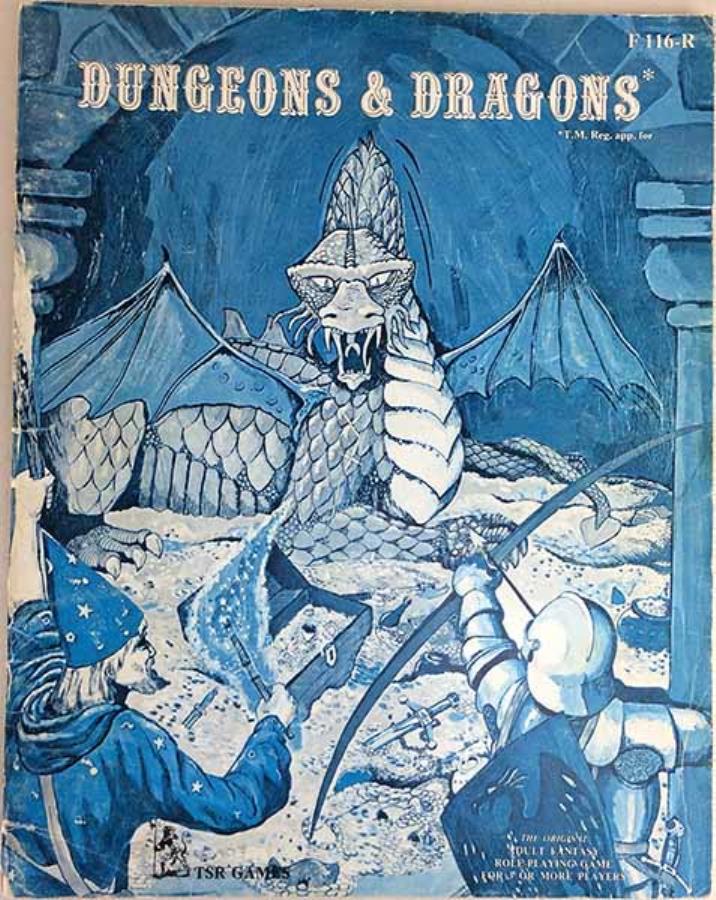This is Part 1 in a multipart series. You can also jump ahead to Part 2 or Part 3.
At Noble Knight Games, we get a lot of questions, both from brand new Dungeons & Dragons players as well as longtime veterans, about the differences between the various versions of D&D. And no wonder, as Dungeons & Dragons has been around for over 40 years!
Given the name of the current version, D&D 5th Edition, you might assume that there have been four D&D editions prior to this one. Depending on how you count, however, there have actually been a lot more. In this series of articles, we take a brief look at each of those editions, starting with the original game and the Basic D&D rulesets it inspired.
ORIGINAL DUNGEONS & DRAGONS (OD&D)
History: Created by Gary Gygax and Dave Arneson, the first game called Dungeons & Dragons was originally published in 1974. OD&D grew out of historic wargames and is based in part on a set of rules Gygax wrote for medieval miniatures battles called Chainmail. In fact, the rules rely heavily on the player owning a copy of Chainmail, especially for resolving combat.
Since it was the very first roleplaying game, Dungeons & Dragons essentially created a new genre out of whole cloth. Elements of D&D’s design would go on to influence not only every RPG that followed it, but video games, board games, collectible card games, and more. However, for all its influence, original D&D is unpolished by modern standards.
Gygax and Arneson wrote D&D primarily for a group of already experienced wargamers, and they assumed players would know how to fill in any blanks in the rules. Thus, there are quite a few spots where OD&D is ambiguous, incomplete, or even contradictory. That isn’t to say that original D&D is unplayable, but it’s a very do-it-yourself, loose game experience compared to more recent editions.
Appearance: OD&D comes in a boxed set. The first three printings feature a woodgrain-style box with a white sticker. Later printings come in a white box. Both versions contain three stapled, digest-sized books: Men & Magic, Underworld & Wilderness Adventures, and Monsters & Treasures.
BASIC DUNGEONS & DRAGONS
There are three versions of what would eventually become Basic D&D (to differentiate it from Advanced D&D). Basic D&D came about as a response to a demand from early Dungeons & Dragons fans. Specifically, players loved the game, but they weren’t enamored with the game’s poor organization. Gary Gygax agreed, and he began the internal process of rewriting and reorganizing the three books and four supplements of D&D into something more coherent.
Holmes Basic (Holmes)
History: While publisher TSR was still working on a D&D revision, they received a proposition from a D&D fan named J. Eric Holmes. Holmes, a professor, author, and neurologist, offered to perform the heavy lifting of rewriting and editing the rulebooks himself. The result was the first Basic D&D boxed set, commonly called the Holmes edition. It’s interesting that Holmes wasn’t setting out to write his own game, but rather editing OD&D into something more manageable. Thanks to gaps in the rules, which Holmes had to fill in order to complete his project, he ended up creating the foundation of a new game line. Basic D&D would continue as its own line, separate from Advanced D&D, for more than a decade.
Appearance: Holmes Basic comes in a boxed set. The box art is color, while the rulebook inside is printed in monochrome blue. Early sets contained numbered cardboard chits rather than polyhedral dice.
Basic and Expert D&D (B/X)
History: The Holmes Basic D&D set was a big seller for TSR, but the company was concerned that players introduced to the system through Basic D&D might have a hard time moving to either the more complex AD&D or the scattershot original game. Thus, TSR published a revision of the work Holmes had begun, first with the Basic D&D boxed set by Tom Moldvay (which covered character levels 1-3) and then with the follow-up Expert D&D boxed set (levels 4-14) by Zeb Cook. Whereas Holmes had streamlined the existing rules, Moldvay and Cook went a step further by making a number of distinct rules choices that would carry through the Basic editions that followed.
Appearance: The Basic game comes in a red box and includes a set of polyhedral dice and a crayon for filling in the numbers, while the Expert box is blue. The rulebooks for B/X come pre-punched with holes so that players can insert them into a three-ring binder.
BECMI / Rules Cyclopedia
History: In 1983, TSR launched the third version of the Basic D&D game, authored by Frank Mentzer. Mentzer’s rules made good on the long-promised goal of extending Basic D&D beyond the low and middle levels, and the line eventually included Basic, Expert, Companion, Master, and Immortals sets, and took characters to level 36 (and eventually beyond). At its height, the Basic D&D line arguably sold better than AD&D, but by the late 1980s the game’s popularity was on the decline in favor of its Advanced counterpart. In 1991, TSR released the final product rulebook in the line: the Rules Cyclopedia. This single, hardbound volume compiled the rules from the Basic, Expert, Companion, and Master sets into one source. Rather than a basic or introductory game, the Rules Cyclopedia represented a stand-alone, fully realized Dungeons & Dragons game that existed independently of what would eventually become 5th Edition D&D.
Appearance: Like the basic sets that proceeded it, the BECMI line comes in a series of boxed sets, each a different color: red, blue, teal, black, and gold, respectively. The Rules Cyclopedia is a 300+ page hardcover.
Next…
In Part 2, we take a look at Advanced Dungeons & Dragons 1st and 2nd edition.




